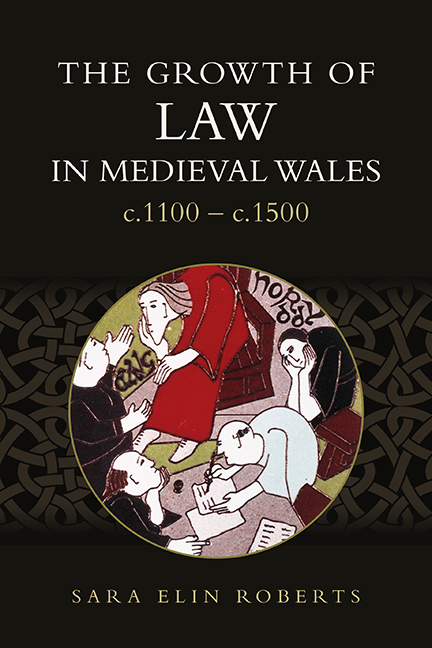6 - ‘O gyureith Hywel Da, a’e arueroed, a’e gynneuodeu’: The Development of the Redaction Manuscripts
Published online by Cambridge University Press: 08 October 2022
Summary
Dywededic yw hyt hynn o gyureith Hywel Da, a’e arueroed, a’e gynneuodeu.
Up to now has been spoken of the law of Hywel Dda, and its practices, and its customs.
The arguments in this work have led to a rejection of the possibility that material found towards the end of certain Blegywryd manuscripts is ‘additional’ or forms a ‘tail’. It argues instead for a flexible interpretation of what constituted a lawbook. The emphasis here is on the textual history, not dealing with the status of the text as law but its status within the textual tradition; the approach is to view the material on its own terms – as material derived from various exemplars, sometimes shared with other manuscripts, sometimes not – and to consider its nature and its context. This means looking at each text as a text, rather than separating out ‘additional material’ which is not related to the first portion of the material in the same manuscript. Both the material and its textual history have their own value, and the reoccurrence of the material in other manuscripts (if not in the same precise location) warns us not to let it be overshadowed by the ‘additional’ designation, or to submerge it into a ‘tail’.
The law manuscripts contained law, and the compilers treated all law in the same way, regardless of its origin or nature. This may explain the problems that the early editors of Welsh legal texts had in trying to create a uniform basic text of Welsh law. This is not something that can be easily solved – Welsh law manuscripts do have considerable variation in order and content, and it is not the purpose of this work to redraw the ‘core text’ of medieval Welsh law; rather, it is to reject the notion of the basic code with anything deviating from that text being dismissed as ‘additional’.
However, it cannot be denied that there are some manuscripts that are completely different in form to the other manuscripts. Some of the manuscripts in this class start with a recognisable text of one of the law redactions (usually Blegywryd, but also Cyfnerth in one example), which has a close affinity to other texts from the same redaction, but the manuscript then continues with different material not found in other manuscripts.
- Type
- Chapter
- Information
- The Growth of Law in Medieval Wales, c.1100-c.1500 , pp. 161 - 186Publisher: Boydell & BrewerPrint publication year: 2022

